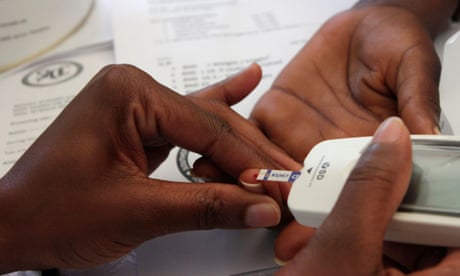Improving Access to Care for People with Diabetes: New Research Highlights Disparities in Treatment
Key Highlights :

The 2023 diabetes global industry overview, the largest survey of its type to date, has revealed that about 40% of people living with diabetes globally go undiagnosed. Most of these individuals live in Africa (60%), followed by south-east Asia (57%) and the western Pacific region (56%). Furthermore, the report found that half of those who are diagnosed do not receive treatment. This stark disparity in treatment highlights the pressing need to improve access to diabetic care on a global scale.
The report looked at more than 2,800 companies, 1,500 investors and 80 research and development hubs focused on the condition. It was noted that there are only 530 companies specialising in diabetes diagnostics around the world, with only 33 located in Africa, south-east Asia and the western Pacific. This is largely due to the limited healthcare infrastructure, including a shortage of healthcare professionals and diagnostic equipment, which can impede the early diagnosis of diabetes.
Caroline Mbindyo, the chief executive of Amref Health Innovations, part of the NGO Amref Health Africa, said half of all Africans do not have access to the healthcare they need. People living in remote areas can live hours or days from a facility, making it impossible for them to get to these services.
In 2021, nearly 7 million deaths around the world were the result of diabetes despite more than $970bn (£794bn) spent on treatment. Most of the organisations in the report are located in the US, with more than 70 companies producing diabetes drugs (55%) located in the US, and 17% in Europe. The global diabetes market is mainly divided into four giant monopolies, namely Novo Nordisk, Sanofi, Eli Lilly and Merck, which account for about 72% of the market.
Rapid urbanisation and the effects of the climate crisis on harvests have led to an increase in cheap processed food, which has replaced more traditional food sources in diets. This, combined with the move to more sedentary lifestyles, particularly in urban centres, has led to an increased risk of developing type 2 diabetes, hypertension and certain cancers.
In order to improve access to care and reduce disparities in treatment, it is essential to invest in tackling these common and chronic conditions. It is also important to focus on prevention, as approximately 80% of NCDs are preventable. This includes promoting healthy diets, regular exercise, and avoiding tobacco and alcohol use. Governments should also provide access to affordable healthcare services, as well as adequate resources and infrastructure to ensure that people can access the care they need.
